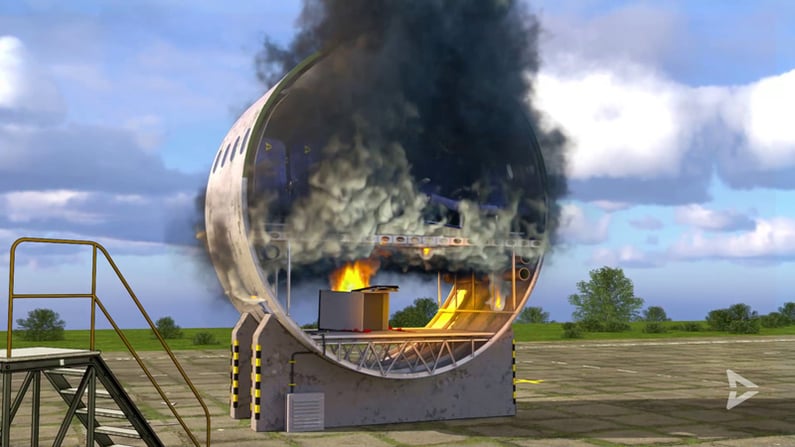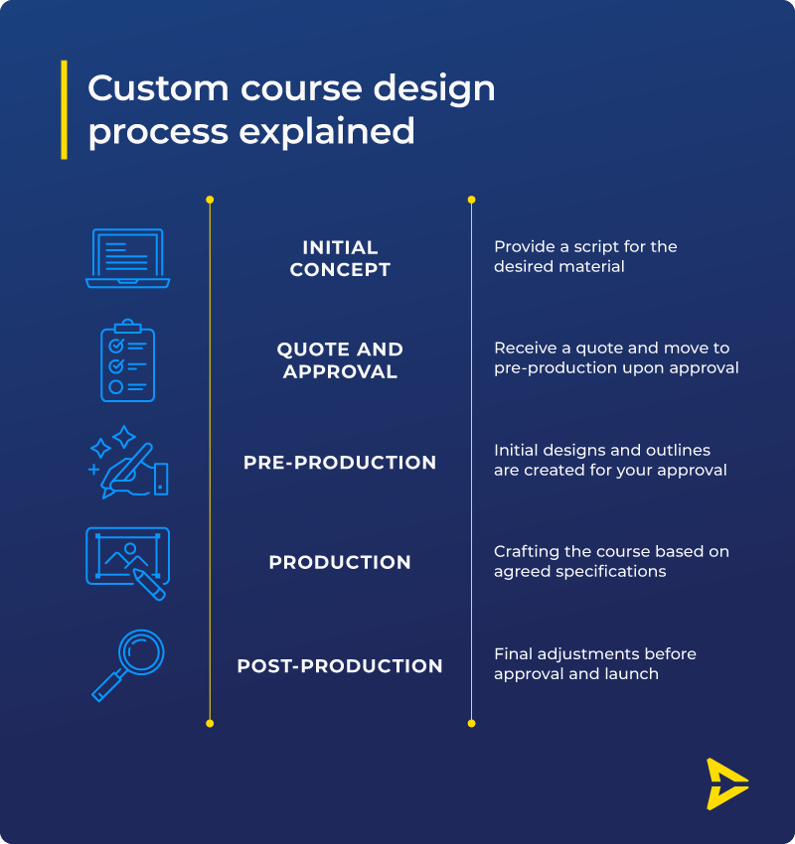So far we've explored several topics about the new ICAO regulations for Dangerous Goods (DG) training with a Competency Based Training and Assessments (CBTA) approach. If you have not read any of the previous articles you can find them below to help you understand the full concept behind CBTA:
- What you absolutely need to know about CBTA
- Is CBTA applicable to my organisation? DG Classic vs DG CBTA. Why change?
- CBTA Benefits: A Game-Changer for Crew Training.
Next, we'll be looking at how to optimise your Dangerous Goods training to the CBTA framework and whether you’ll need to customise your DG training or not. We understand that it may feel like an additional load on your already packed agenda, but don’t worry, by the end of the article we'll be introducing a helpful new service that will make course customisation a walk in the park.

How to optimise your DG training to the CBTA framework
Aviation training managers will assume increased accountability and play a more active role in incorporating CBTA DG in order to comply with the latest ICAO regulations. Here is a brief outline of how to enhance your DG program to align with the CBTA framework:
Understanding the flexibility of the CBTA Framework
CBTA can be used differently by different operators, and here lies the power of this learning framework: by making your CBTA course material more relevant to your crew.
The flexibility of the CBTA framework allows for customisation that ensures each training program specifically addresses the unique challenges and needs of your organisation. With some assistance, you can develop an ideal DG training program for your team by aligning your operational needs and requirements per ICAO regulations.

Choosing a CBTA Training Delivery Method
When you adopt CBTA for your training, you can choose to create your DG training in-house or find a third-party CBTA provider like Scandlearn which has a Training Management System (TMS) that allows you to enrol, monitor, track and analyse your assessment data. You could also do a mix of both and combine theoretical and practical elements.
Finding the right approach and tools for your selected delivery method will require some research. This involves understanding the nuances of different training methodologies and selecting the one that best aligns with your organisation's objectives and the specific way that you handle dangerous goods.
Whether you opt for in-house training, a third-party provider, or a blend of both, it's crucial to ensure that your program adheres to ICAO regulations and effectively addresses the real-world scenarios your crew will encounter.
No matter what approach and method you decide on, you should be certain that you select a solution that will be effective and manageable for you in the future. Developing a training program from the beginning doesn't have to be an insurmountable challenge, but it does require some creativity and work.
If you lack the time and expertise to complete this task, seeking assistance from a reliable external provider such as Scandlearn, who is experienced with this process and has helped hundreds of aviation organisations to CBTA success, can be a valuable step.
Designing Compliant DG Training Programs
When crafting a DG training program that aligns with CBTA (Competency-Based Training and Assessment) guidelines and ICAO regulations, it's essential to focus on practical, actionable steps. Here's a more specific approach:
- Training Need Analysis: Evaluate your organisation's specific DG requirements and scenarios.
- Compliance Review: Regularly update and align your program with the latest ICAO regulations.
- Module Development: Create modules that cover all important safety and emergency aspects of DG, following regulatory compliance.
- Continuous Assessment: Regularly update and align your program with the latest ICAO regulations.
- Engaging Content: Develop interactive and practical training materials, including simulations and case studies.
- Technology Use: When selecting digital tools and platforms, ensure they are both user-friendly for effective learning and progress tracking, as well as easily maintainable.
- Feedback Integration: Implement a system for gathering and incorporating feedback to continually improve the program.
- Write your manual: Update your OM manual(s) in accordance with your new CBTA program to get it approved by your national authority.
- Assessment and Certification: Design robust assessments to validate crew knowledge and readiness, ensuring alignment with CBTA standards.
- Partner with Experts: Consider collaboration with specialists like Scandlearn for tailored and compliant training solutions.
By following these practical steps, you can create a DG training program that is not only compliant with ICAO regulations but also highly effective in equipping your team with the necessary skills and knowledge.
Developing and Enriching your DG Program
Choosing a third-party provider with a CBTA platform and a standard DG training course might not meet your operational requirements or save you money. Make sure that your training provider can tailor your DG course to better fit your needs.
Not only that, adding more customised course content will enrich the course content itself and enhance the relevance of the training to ensure it's directly applicable to your team. While this might seem daunting, it's a valuable opportunity to improve your training program and achieve better learning outcomes in the long run.
Note: Scandlearn offers a simple yet comprehensive CBTA solution, prepared for company optimisation and operational requirements, including guidance for incorporating your CBTA DG training specifications into your training manual. Additionally, Scandlearn provides ready-made courses for fixed-wing and rotor-wing operators, in Carry and No-Carry variations.
Tailor-Made Training Solutions by Scandlearn
Customising your DG training can feel like a daunting task because of the time and money involved, but worry not, Scandlearn has you covered. We’ve helped hundreds of aviation organisations through this process to reach a successful DG CBTA approval.
Andrew Johnson, Aircrew Training Manager from Babcock International Group is one of them. He was delighted with the whole experience of getting on board and adapting their DG training optimisation to CBTA. Here is how he praised Scandlearn on the process:
Scandlearn has been instrumental in helping our company adapt to the new CBTA framework for aviation training. Throughout the process, Scandlearn has provided amazing support, always willing to help with course creation, adding items to make the course bespoke and offering guidance. All done without fuss and within fantastic time frames – same-day calls etc. Overall, we have had a positive experience with Scandlearn and would like to see more courses beyond just DG training being delivered in this new way in the future.
We’ve designed two customisation services designed to help you adapt smoothly to your DG training in a theoretical format:
Upload your own material
Our Evolve platform allows seamless integration of in-house resources. Easily upload your existing content to get up and running quickly. Contact us today to learn how to get started and create new material or convert your already-made material.
Custom designs by our expert team
Our design team works with you to create bespoke training materials.

Scandlearn offers a CBTA solution that matches your training goals, whether you upload your content or choose a custom-designed course.
Conclusion: Embracing the future of DG training
The transition to CBTA (Competency-Based Training and Assessments) for DG training programmes marks a significant step forward in the field. For aviation training managers, understanding and leveraging the tools and support provided by platforms, like the one offered by Scandlearn, can make this shift not only easier to manage but also advantageous. Embrace this unique opportunity to enhance your training program, and ensure that your new CBTA training material meets the specific needs of your team and organisation.





